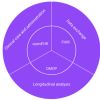HealthManagement, Volume 23 - Issue 5, 2023
The expected shortfall of registered nurses by 2030 highlights the need to attract young people to the profession in massive numbers and then find the resources to educate and train them. The platform model is one resource that can help achieve this necessary goal—while addressing needs in the present.
Key points
- The nursing crisis is a disastrous collision of demographic shifts, training gaps, and rising dissatisfaction within the profession.
- In the U.S., more than 275,000 additional nurses are needed from 2020 to 2030. In the U.K., the projected shortfall is 140,000.
- A platform staffing model connects qualified nurses to the facilities that need them most.
- Deploying the platform staffing model would allow healthcare leaders to tackle issues of uneven access and clinical mismatch head-on.
Nurse shortages can only be solved by training and hiring more nurses. Yet, at the height of the pandemic in the United States, a public-private approach to nurse recruiting, vetting, and payment managed to ease shortages across the country. In the U.S., it took COVID-19 for the government to fully back this approach. However, it could be implemented immediately in health systems that are already accustomed to public-private collaboration.
A platform staffing model connects qualified nurses to the facilities that need them most—and then handles the credentialing, validates the clinical match between the nurse and the site, and pays the nurses directly after the shift. The details of any one platform are less important than the trustworthiness of the governance; same-day pay is a major satisfier for nurses in the U.S., but the model could be sustained without it. Trust is vital because the success of the platform depends on a critical mass of people signing up, with the number of successful placements mirroring the number of participants. Especially in healthcare, the reliability of the infrastructure and the soundness of the protocols must be clear to all.
Proof of Concept
In the U.S., the viability of the platform staffing model has been proven by market metrics: the pioneer of this approach is currently the fastest-growing company in the country. More importantly, in the healthcare context, the company has been certified by the accrediting body, the Joint Commission, three times since its inception in 2017, with zero requirements for improvement each time. This evaluation process hinged on credentialing: the reliability of the technology allowing nurses to upload their credentials securely and the ability of qualified professionals to access and review those credentials. Where traditional staffing approaches might intake faxed credentials or sometimes even hard copies, the platform converts digital credentials into scrollable PDF packets that reviewers can navigate via thumbnail. Homing in on the necessary information more quickly reduces delays associated with this stage of nurse recruitment. However, the Joint Commission and other regulatory bodies may be less interested in the speed it enables than in its effect on quality and safety. The technology not only dramatically simplifies compliance for the hospitals, but it dramatically empowers regulators by paving the way for continuous, digital compliance monitoring.
In the U.K. and European context, streamlining the staffing process may not be a market imperative, nor is business growth the most relevant sign of success. But with the Royal College of Nursing’s director for England warning that the nursing shortfall will have an apocalyptic impact on patient care, finding ways to connect properly credentialed nurses to sites in need is critical.
In the U.S., it was the apocalypse of the pandemic that proved the flaws in traditional staffing practices. Non tech-enabled legacy staffing companies use manual, labour intensive processes that are slow and expensive. These legacy companies tend to limit transparency for both prospective employers and employees based on market considerations—but the agencies themselves, too, could only see the employers they were contracted with. State-based variations in licensure requirements were another obstacle to effective staffing. Particularly, onerous licensure standards could stand between a facility in need and a willing nurse just a few miles across the state line.
The U.S. government tackled several of these obstacles during the pandemic. They lifted certain licensure requirements and backstopped state health systems with federal emergency dollars. This government support effectively transformed a siloed, market-based healthcare system into a broad public-private partnership, at least for a time. And with the government essentially acting as a single-payer, the most efficient path they found for getting nurses where they were needed most was this platform model.
Adapting the Model
NHS’s energetic international recruitment is a positive step toward meeting the U.K.’s demand for nurses. However, researchers argue that it comes nowhere near a complete solution. Nor, they point out, “does it ensure that nurses are recruited to the areas and types of care where the need is greatest.” Deploying the platform staffing model via NHS would give healthcare leaders the ability to tackle issues of uneven access and clinical mismatch head-on. For example, in the U.S., all vacancies are listed, then nurses search those positions by acuity, location, and pay. Their credentials and experience must match the acuity level and specialty in each posting, a match that is confirmed with a proprietary matching algorithm. (This avoids a common problem with traditional staffing, where recruiters without clinical experience would vet nurse resumés, often mistakenly, and send them to jobs beyond their acuity level.) Beyond the aspect of the clinical match, however, there are no other constraints on what American nurses see. However, if the government is administering the platform, it can weigh or highlight certain positions based on other priorities, like access or need.
Certain aspects of the model would necessarily carry over no matter where it was implemented: social media- and geo-targeted advertising to potential participants, self-service credentialing, a constantly updated and searchable database, and clinical match assurance. The question of same-day payment would need to be addressed if the model were adapted for a European context. In the U.S., this feature is a major satisfier for platform participants. The nurses are happier for obvious reasons, but the hospitals also benefit from keeping their payroll better updated and their bottom line accurate. Still, after a moderate compensation threshold has been met, nurse users cite flexibility and control over their schedule as the model’s main benefits. NHS leaders could decide whether or not to deploy this feature.
Lighter Lift, Faster Improvement
The pandemic forced the U.S. to invest in a new approach to nurse allocation. In the U.K. and Europe, that approach could be implemented with a much lighter lift, and its benefits could be amplified more easily as well.
The nursing crisis is a disastrous collision of demographic shifts, training gaps, and rising dissatisfaction within the profession. Having all of a nation’s nursing staff visible in a single database—which they are participating in entirely voluntarily—would reveal gaps in specialties or licenses that could then be addressed through reskilling initiatives, changes to compensation, and other strategies. The U.S. platform is currently piloting ways to train more ICU nurses, as that gap is both hugely costly and a direct threat to patient safety. The NHS could launch similar pilots based on its most urgent needs.
The U.S. Bureau of Labor Statistics projects that more than 275,000 additional nurses are needed from 2020 to 2030. In the U.K., the projected shortfall is 140,000. Both countries will need to attract young people to the profession in massive numbers and then find the resources to educate and train them. The platform model is one resource that will help them achieve that necessary goal—while addressing needs in the present.
Conflict of Interest
None.
References:
ITV News (2022) NHS in England could face ‘apocalyptic shortage of 140,000 NHS nurses by 2030’. Available at https://www.itv.com/news/2022-07-20/nhs-in-england-could-face-apocalyptic-shortage-of-140000-nhs-nurses-by-2030
U.S. Department of Labor. Available at https://www.dol.gov/newsroom/releases/eta/eta20221003
















